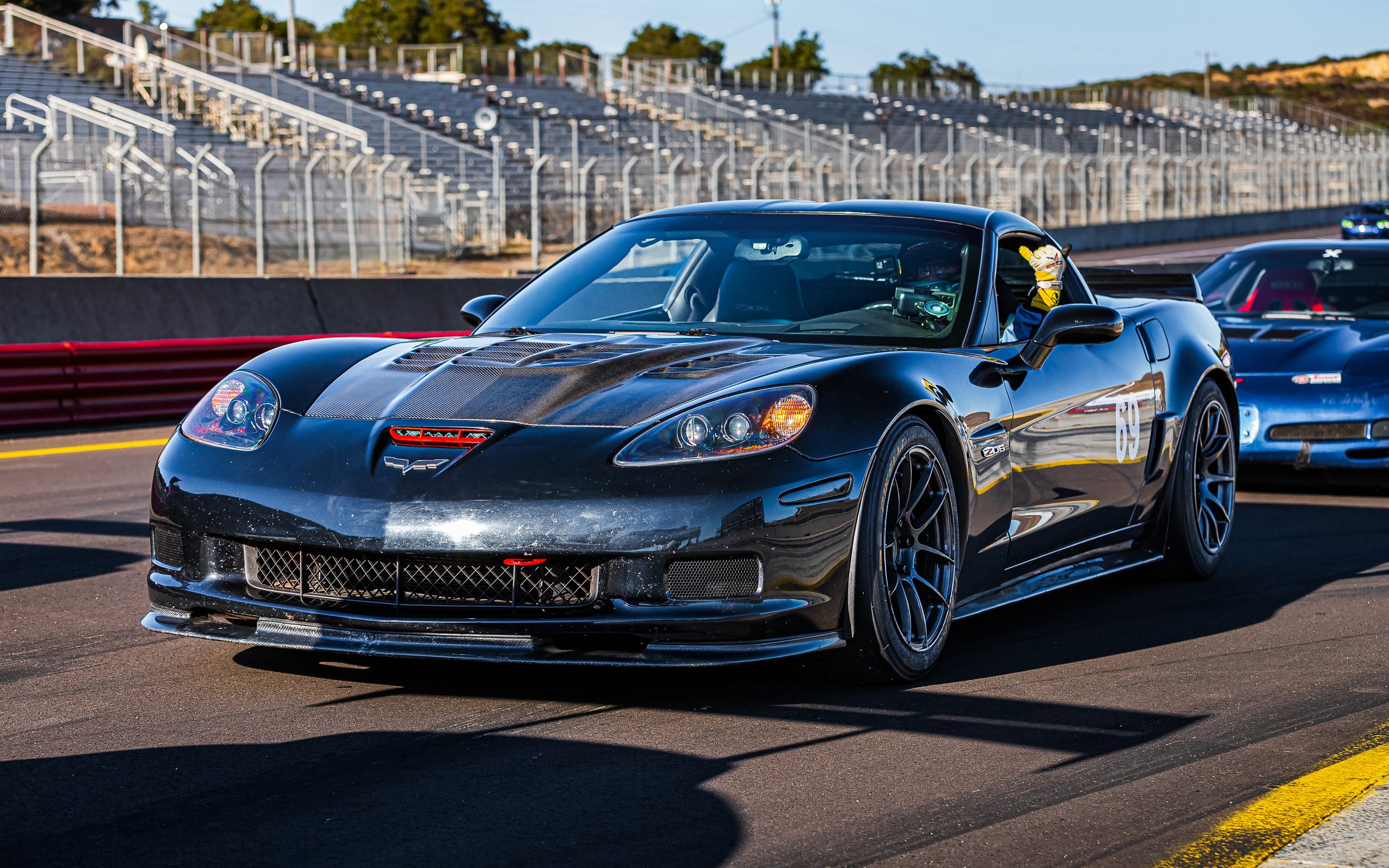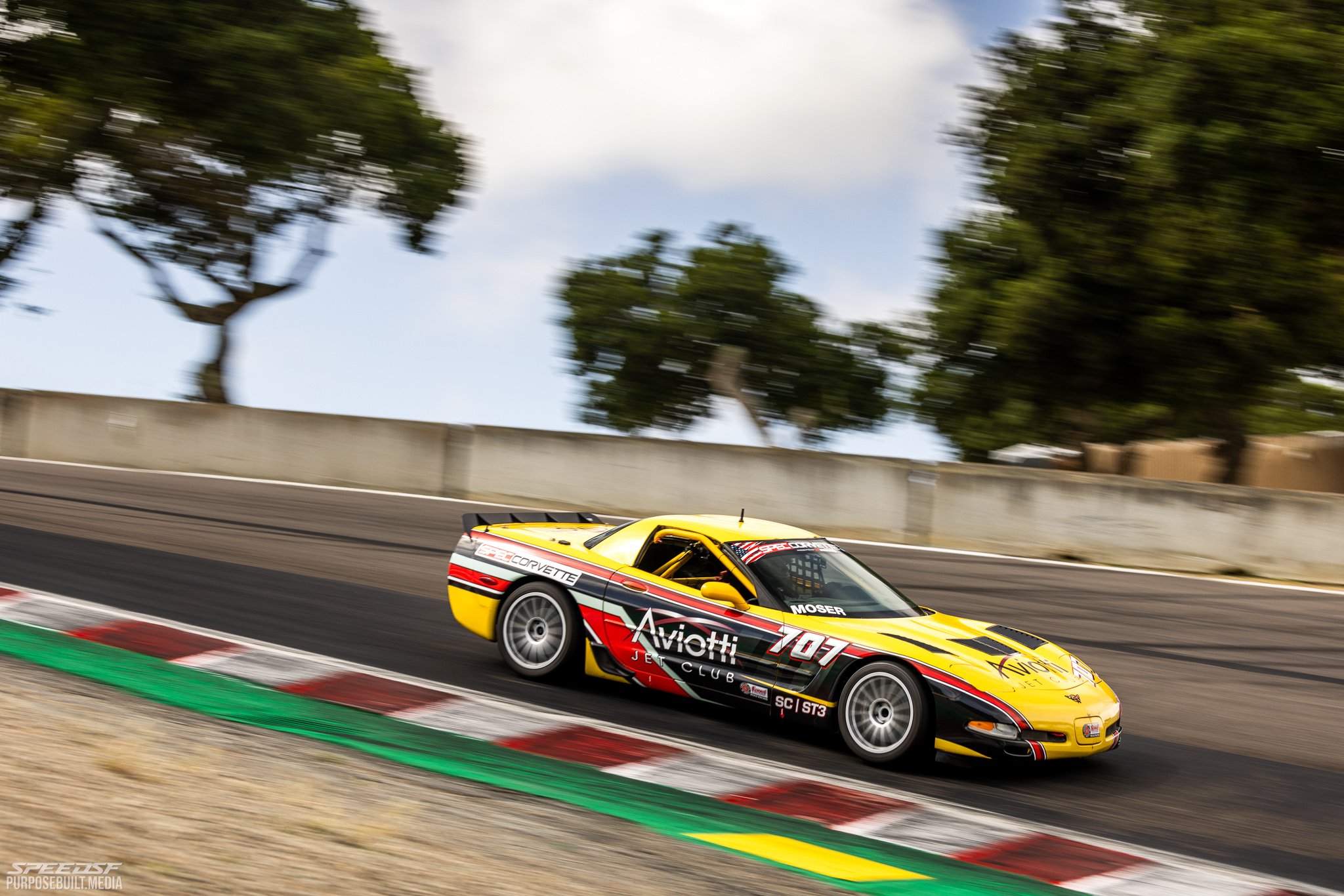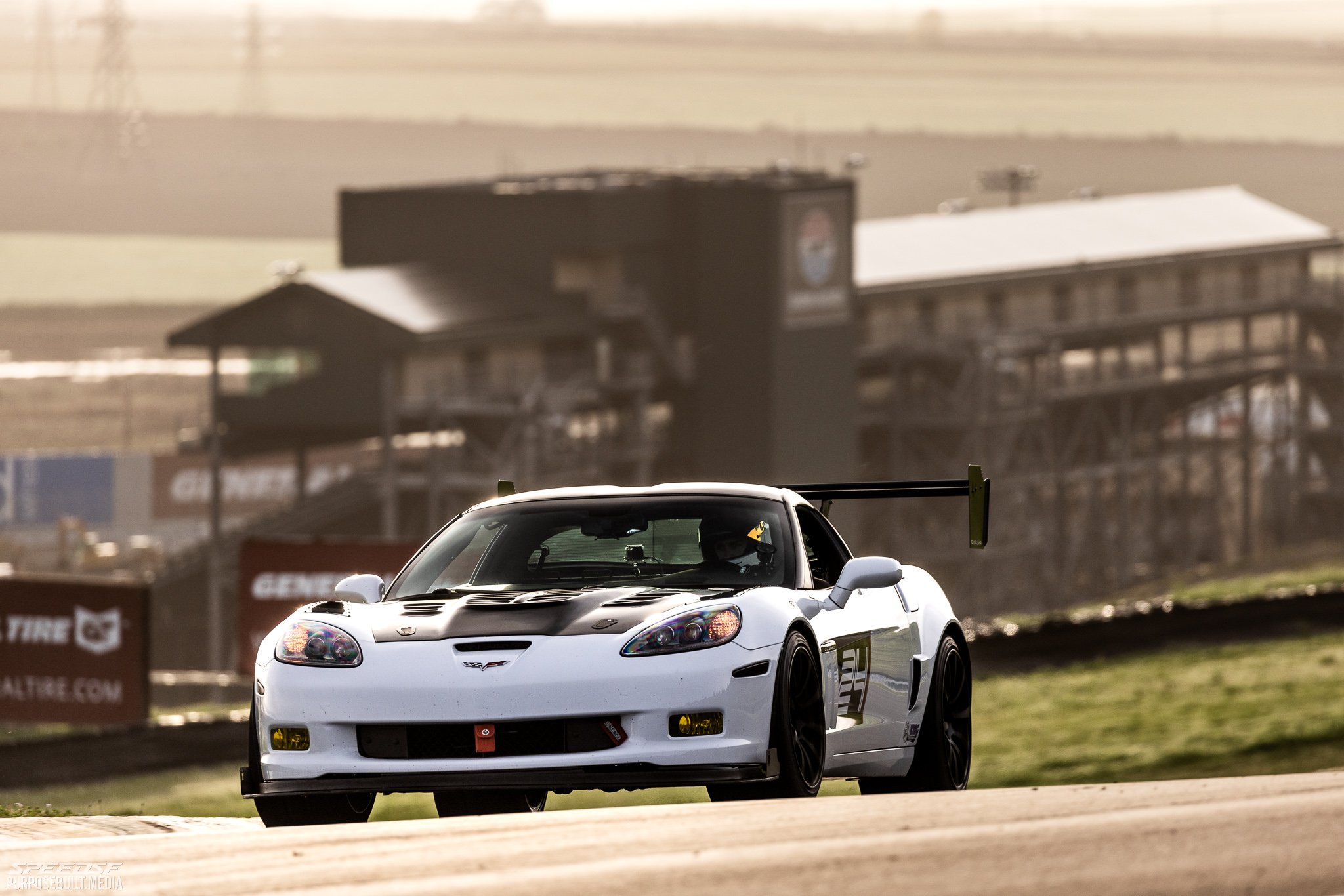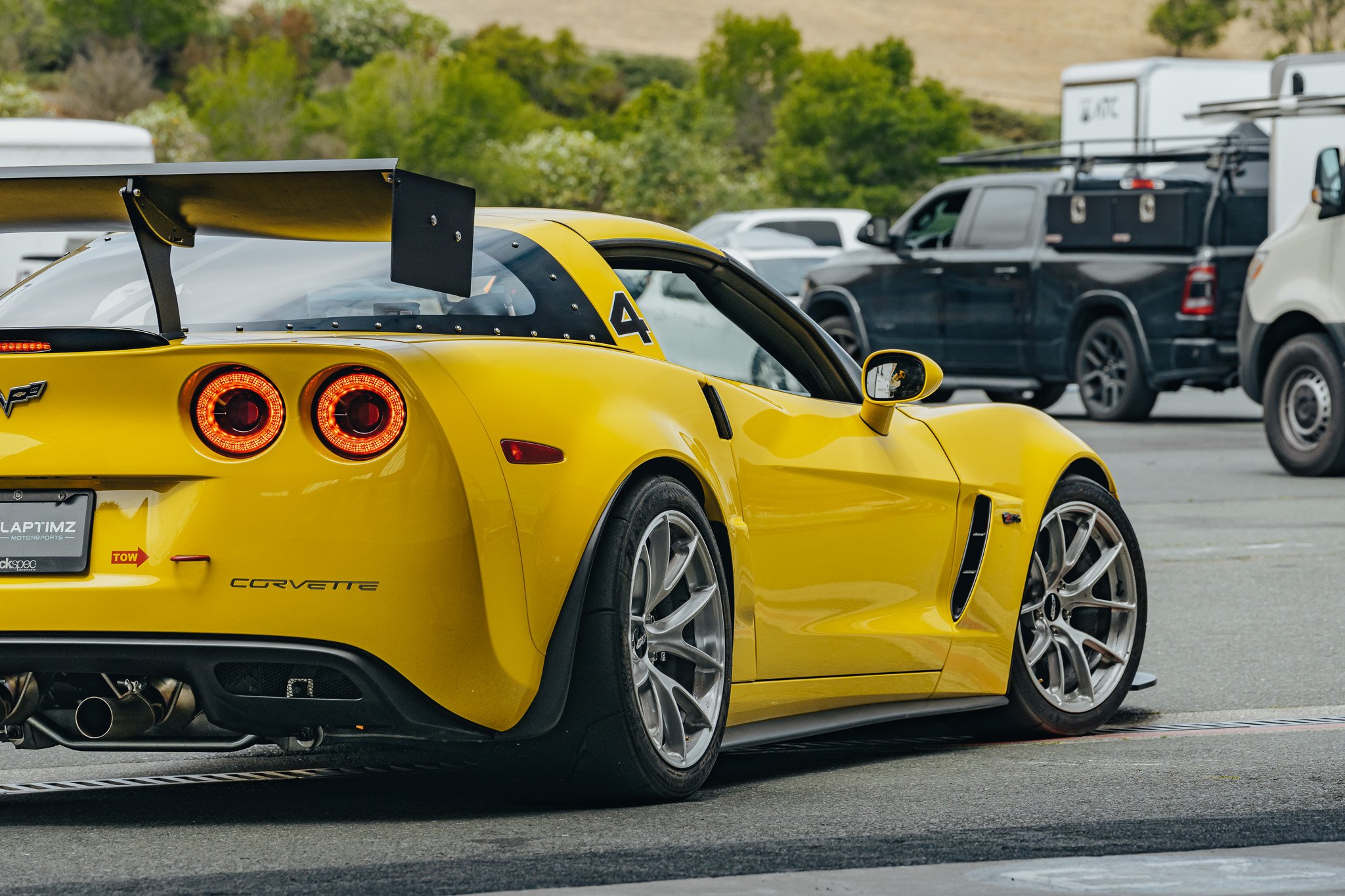
SpeedSF Blog
Every Build Has a Story – Meet the Cars of SpeedSF

Bennet’s C8: Driver Mod Comes First
After making the jump from a Tesla Model 3 into a gen-two BRZ, Bennet realized that he had to continually tailor his driving approach to suit the new platform. He took that understanding into his next purchase, a C8 Corvette, and soon grew to love the MR platform which, initially, had been a little too challenging.

Cody’s C6 Z06: Father-Son Duo Builds Best Of Both Worlds
Some claim a true street-track car can't be good at anything, but Cody Bulkley thinks otherwise. His background in FSAE and his current role with GM have given him special setup insight to help strike that elusive balance between race car and street car, which is reflected in the performance and versatility of this C6 Z06.

AP’s Spec Corvette: Ferrari Fill-In For Forty Large
After giving the Ferrari Challenge series a shot, AP Miranda decided he’d look for a more welcoming group of drivers in another popular club series. He found Spec Corvette, a cost-conscious series based around the C5, ticked all the boxes at a sixth of the Ferrari’s price.

Cory’s C6 Grand Sport: Safe Not Sorry
After Cory Smetzler saw the light during a ridealong in a C6 Z06, he bought a Grand Sport from the same generation. It might not have the biggest motor or the lightest chassis in the lineup, but it has a few features which have offered him peace of mind with small few setbacks.

Thomas' Corvette: In Good Company
In only two years, Thomas has learned more than most will grasp in a decade of track days. Having a solid, dependable C5 has helped him put in his time, and having Elite Performance as a resource has made fine-tuning the car so much simpler.

Sonoma Logistics: Where to Stay, What to Eat, What to Wear
With a unique rhythm, great amenities, and amazing food and lodging nearby, Sonoma Raceway is one of the most popular destination tracks on our calendar.

Matt Paige's C6 Z06: The Track Rat’s Idea of a Hybrid
Rather than chase big power, Matt Paige made the necessary adjustments to this cost-no-object Corvette track car to make it reliable, approachable, and sexy.
